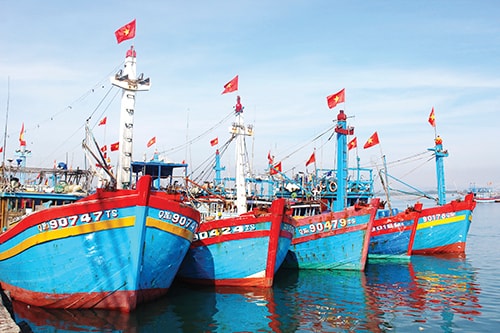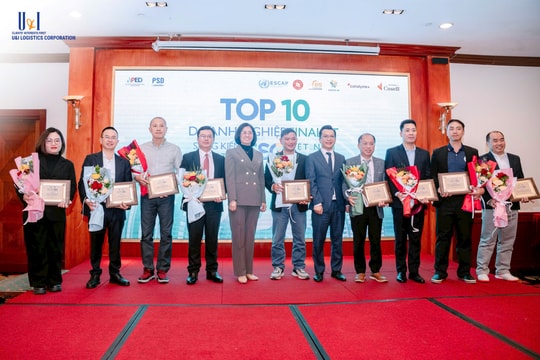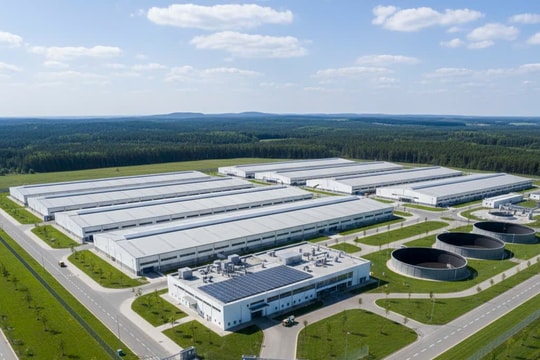(Vietnam Logistics Review) The race to attract investments among provinces in the Central is in progress. The factor of having seaports is considered a strong point to provinces but it also put the logistics service industry facing challenges.
Building seaports going together with developing economy
The Central has a long coast of over 1,200km. With the advantage, every provinces in the area has been taking in a race of building seaports: there is a port every 30 - 40km.
According to the Plan of Developing Vietnam Seaports to 2020, orientation to 2030, the Central will have three seaport groups: Type IA- 01 international gateway port and international transshipment port: Van Phong Port (Khanh Hoa); regional hub ports type I include Nghi Son (Thanh Hoa), Nghe An, Vung Ang (Ha Tinh), Chan May (Thua Thien, Hue) Danang, Dung Quat (Quang Ngai), Quy Nhon (Binh Dinh).

Experts have been afraid that building general ports and container terminals everywhere will make provinces in the Central overlapped in attracting investment and seaport redundancy… However, there have been ideas that the economy of the Central is sea economy. To develop it, seaports must be built first and then, industrial parks, economic zones, and residence zones…
In fact, in the past few years, the sectors of sea transport and logistics have had remarkable developments. Some ports in the Central have had cargo amounts that surpass their designed capacity. And there have been complaints from foreign investors that it takes more time for their cargo in transshipment and exported goods. Ports of Hon La, Chan May, Tien Sa and Quy Nhon have asked for permission of expanding and upgrading.
According to Nguyen Huu Sia, General Director of Danang Port J.S Co., the designed capacity of Danang Port is 6m tons pa. However, it has been overloaded. To solve the problem, Danang Port has been in progress of upgrading and expanding phase II. The total area will be expanded to 86,674m2 and 2 berths will be built: one with length of 310 meters and one with length of 210 meters serving container vessels of large capacity…
After many years of operation, the amount of cargo and the number of passengers have surpassed the capacity of berth no.1. Therefore, the province of Thua Thien, Hue is building berth no.3 with length of 270 meters. The project is built on the area of 13ha: 10 ha for berth area and 3 ha for the water area. At the same time, berth no.2 is expected to start the construction in the 4th Quarter of 2017 and will be finished in 2020.
In a working session between the consultancy group for the Central Coastal Region Development and Cooperation with the People’s Committee of Quang Ngai Province, Ngo Hai Truong, Deputy Manager of General Planning Department, Management Board of Dung Quat Economic Zone, suggested supporting enterprises investing in seaport exploitation to make Dung Quat a magnet to attract investments in Quang Ngai and in the Central. Truong said although Dung Quat has an advantage of a deep-water seaport, many seaports have not had routes for container, which make enterprises hesitated in cargo transport to HCMC, Hai Phong or Danang…

Besides, other seaports as Quy Nhon (Binh Dinh) or Van Phong (Khanh Hoa) suggested the Central Committee should support them in upgrading to solve issues of overloading and meeting the needs of regional economic developments. This affirms an important role of sea economy in the strategy of developing economy for the Central.
Why is logistics service inadequate to seaport advantages?
Although there is a dense seaport system in the Central, the seaport- logistics industry has not have adequate developments. Experts said regional industry is not strong enough to provide cargo for logistics service. And the fact that many seaports make cargo scattered is also a problem to logistics service providers.
Statistic showed that the amount of cargo going through ports in the Central accounts for 15% and the amount of containers going through 2 ports of Danang and Qui Nho was around 3.2%. It is obvious the level of industrialization, production and amount of import- export of the Central’s, especially of the Central Key Economic Zone’s, is low comparing to the country’s. Mai Van Quang, General Director of Asiantrans (Vietnam) said there should be particular allocation and interest sharing among provinces and cities in the area and among neighbor countries’ other areas along the East - West Economic Corridor: they should make a larger cake together instead of trying to take “a lion’s share” in a small one. Besides, local authorities should save investing capital in ports in upgrading roads, human resource training and in solutions to attract more investments instead of investing them in ports in the current time. “For the initial condition of developing regional logistics centers and systems in building infrastructures of all kinds as transport, warehouses, IT, and electricity and water supplies,” said Quang.
 | Experts have been afraid that building general ports and container terminals everywhere will make provinces in the Central overlapped in attracting investment and seaport redundancy… |  |
According to PhD. Tran Du Lich, although large economy zones as Chan May, Chu Lai, Dung Quat have not been able to attract many investors and productions, there has been a rush in upgrading provincial ports, which wastes investing sources and makes competitions among provinces stiff.



.png)




.png)

.png)



.png)
.png)
